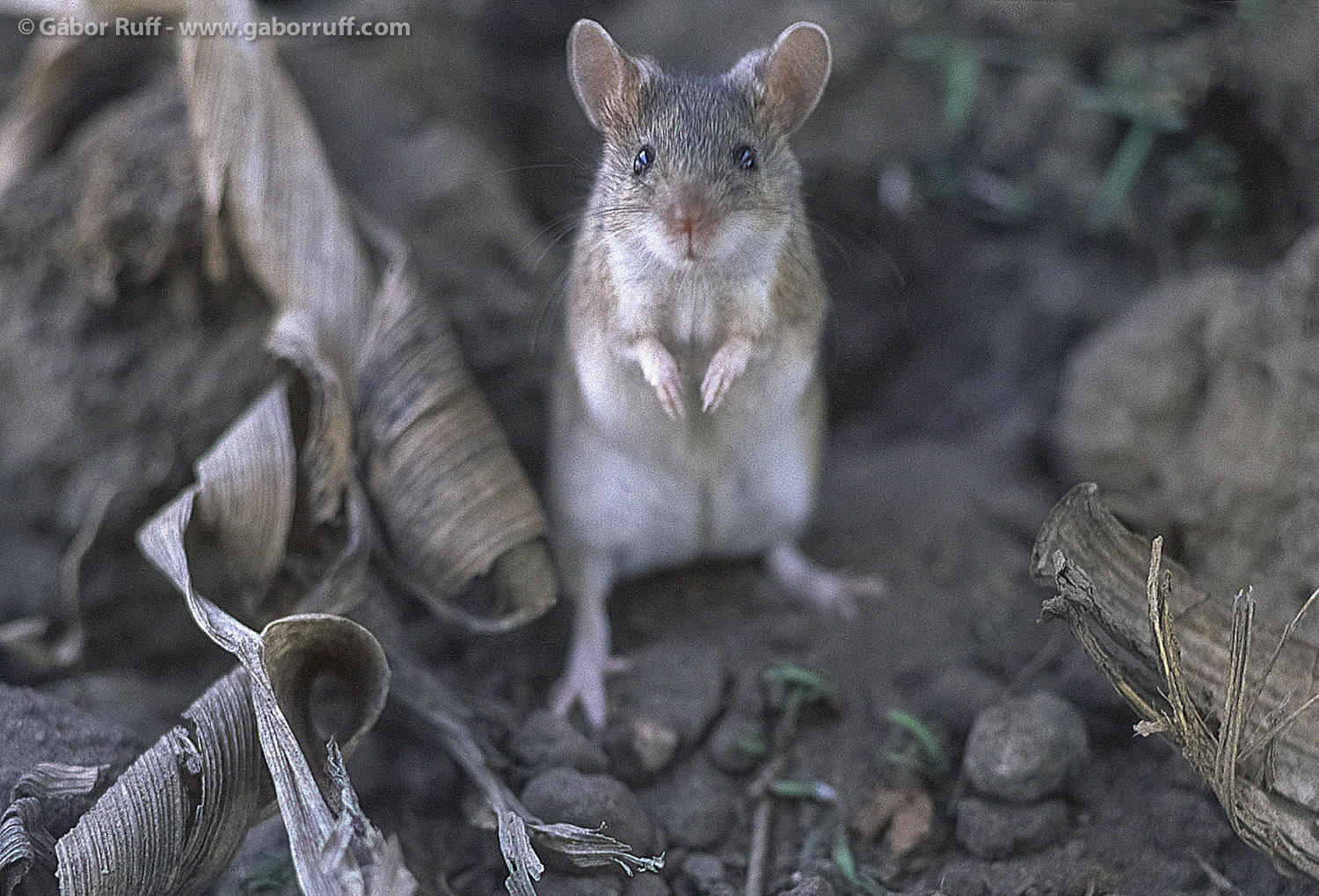The steppe mouse or mound-builder mouse (Mus spicilegus) is an endemic species to South-East Europe and it is a widespread rodent in Hungary. Its Hungarian name is güzüegér. The steppe mouse occupies in various grassland and agricultural habitats. It is famous for its unique mound building behavior. There’s a Hungarian proverb for hardworking people based on this mouse’s practices: working like a güzü. During autumn, mice construct large mounds. The mounds contain several parts of plants and covered by soil layer. Underneath the mounds, mice excavate their nest chambers and spend the winter in the nest. Contrary to the common belief, the stored vegetable material in the bank does not serve as food. The plants inside the well-contsructed mound can protect the nest chamber from absorbing water and keep it dry. Mounds also reduce the temperature variations during the winter.
I studied the natural history of the steppe mouse many years ago when I was a university student, and I wrote my MSc thesis, under supervision of Zoltán Bihari, about this interesting overwintering behavior. Furthermore, I published a popular science article (in Hungarian) about this topic in the TermészetBÚVÁR magazine in 2006 (pdf). Although it has a very unique behavior, the steppe mouse is a barely investigated species. I am glad that’s starting to change.
Source:
Szenczi, P. et al. (2011). Morphology and function of communal mounds of overwintering mound-building mice (Mus spicilegus). Journal of Mammalogy, 92 (4), 852-860.
Szenczi, P. et al. (2012). The contribution of the vegetable material layer to the insulation capacities and water proofing of artificial Mus spicilegus mounds. Mammalian Biology – Zeitschrift für Säugetierkunde, 77 (5), 327–331.
Gear: Canon A-1, Canon 50mm F/1.8 lens, Fuji Sensia 100 film.


